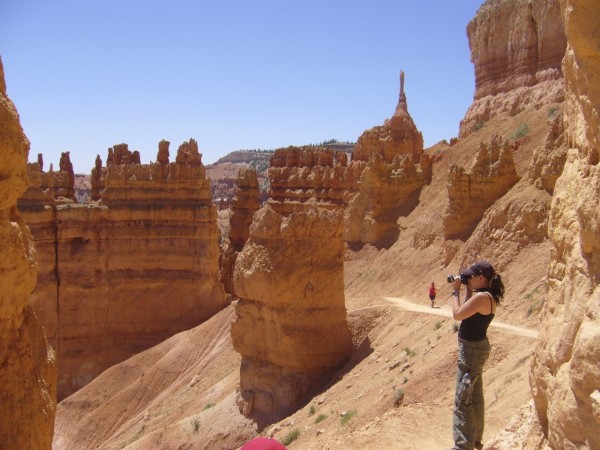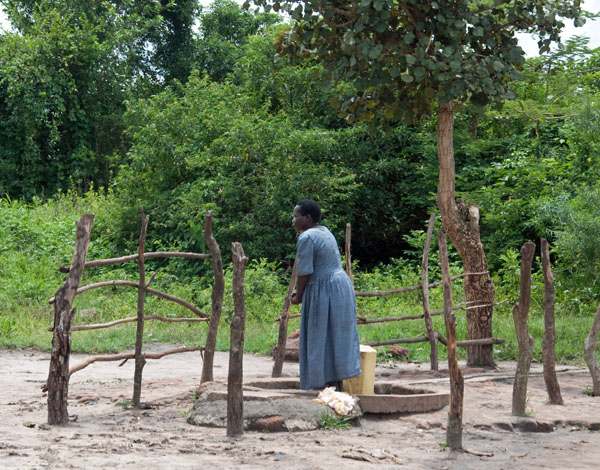
Relaxing on a beach. Sipping fresh coconut juice from an actual coconut. Watching palm trees sway gently in the breeze. How is that picture not appealing? You can experience it for yourself if you include Polynesia on your career break itinerary.
Polynesia is a term used to describe many of the Pacific Islands in the South Pacific Ocean. There are hundreds of Polynesian islands in the South Pacific, but some of the most accessible are Samoa, Tonga, and the Cook Islands. Traveling solo to Polynesia may bring up some unique concerns, so here are some things to keep in mind.
Arriving in Polynesia
The Polynesian islands of Samoa, Tonga, and the Cook Islands are a lot less developed for tourism than their Fijian Melanesian neighbor. Flights tend to arrive at ridiculous hours of the night as well. My flight to Samoa arrived at 1 am. I am the type of traveler who usually has no qualms with sleeping in airports, and I initially planned to do that in Samoa. However, when I arrived, I did not feel comfortable to do so as a female on my own. Because I had planned to sleep at the airport, I hadn’t done much research into nearby accommodation. Luckily, I had a very helpful taxi driver who not only didn’t rip me off too badly, but also took me to the cheapest guest house in the capital city of Apia. When I arrived in Tonga, it was also late at night, but I had booked ahead with a local hostel that offered a pick-up service (Toni’s Guesthouse), so I was secure in knowing I would be safely taken to my accommodation.
Tip: If your flight will arrive late, do your research and know what hotel or guest house you want to go to. Try to find some other travelers to share a taxi with and try to bring a small amount of local currency with you as ATMs are not always reliable on the Pacific Islands.
Cultural expectations
The majority of Polynesians are devout Catholics. Everywhere you go, you will see villages competing with each other to have the biggest and most ornate church. Everything shuts down in Polynesia on Sundays, so don’t expect to get much done. Women in Polynesia are very strong and independent, so most locals won’t think it is too weird that you are traveling alone as a female. I never got any questions about whether or not I was married, or where was my boyfriend, except by one particularly hopeful young man in cafe.

With such a religious population, it shouldn’t come as too much of a surprise that Polynesians are also very modest people. Although you do get a little bit of leeway as a foreigner, women should take care to dress conservatively. This doesn’t have to be over the top – just keep your swim wear to the beaches, and when walking through towns or villages make sure you are not showing too much skin. Under no circumstances should you walk around a village in a bikini top. I made sure to pack t-shirts instead of tank stops, and I wore leggings under my short shorts, or knee length skirts.
If you want to attend a church service (and you should – the Polynesian singing is something to experience!), then make sure you pack something appropriate. A long skirt or trousers will do, or alternatively you can “go local” and wear a sarong or lava lava. Polynesians are very proud about their dress and their religion, so make sure that whatever you choose to wear, it is clean and presentable.
Dangers and annoyances
Like in any place that is unfamiliar to you, it is probably not the best idea to walk around late at night by yourself. This is especially true if you have been drinking, or if you are walking around in areas where other people who have been drinking are congregated. In the villages and small resort towns, the bars will most likely be located in your resort so there isn’t too much worry about safety there. In the cities though, you need to be more careful when walking at night.
I didn’t find that anyone was threatening or made me feel uncomfortable when I walk at night, although I did notice a distinct lack of street lighting around. If something did happen, it is unlikely anyone would be able to notice in the darkness. If you do need to walk alone at night, stick to the busier main roads or just take a taxi – they are incredibly cheap on the Pacific Islands.
More than anything, use your common sense, and you should have no problems at all. So just relax, enjoy your coconut, and work on that tan.
Jade Johnston is a Canadian expat who now lives in Australia. She writes about budget travel, destination and adventure travel, and family travel on her blog, OurOyster.com. Follow her on Twitter as @our_oyster or on Facebook.
 The recent death of a New York mother, Sarai Sierra, while traveling in Istanbul has led to scrutiny over whether it is safe for
The recent death of a New York mother, Sarai Sierra, while traveling in Istanbul has led to scrutiny over whether it is safe for 

 A former finance executive, Erin Michelson is now an “Adventure Philanthropist,” who recently completed a two-year global giving adventure, visiting all 7 continents and exploring 60 countries. Volunteering with global non-profit organizations along the way, Erin helped build a house in the Philippines, a well in rural Uganda, and a library in northern Laos, sponsored secondary school education for a young woman in India and helped provide self-defense training for young girls in Israel. Read more about her experiences on
A former finance executive, Erin Michelson is now an “Adventure Philanthropist,” who recently completed a two-year global giving adventure, visiting all 7 continents and exploring 60 countries. Volunteering with global non-profit organizations along the way, Erin helped build a house in the Philippines, a well in rural Uganda, and a library in northern Laos, sponsored secondary school education for a young woman in India and helped provide self-defense training for young girls in Israel. Read more about her experiences on 
 An adventurer at heart,
An adventurer at heart, 







